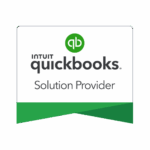The United States Bureau of Labor Statistics predicts 10.3 million Americans will be self-employed by 2026. Self-employed people take on tasks typically handled by an employer, including documenting finances.
If a person’s field is anything other than finance, financial documents can be daunting. Fortunately, anyone can learn the basics. The cornerstone of business financial literacy is parsing three key statements:
- a balance sheet
- a cash flow statement
- an income statement
This article is about that last document. We’ll walk you through the purpose of an income statement, how to read it, and how to use it to make wise financial choices. We’ll also go over common variations on an income statement’s structure.
What Does an Income Statement Show?
Income statements show a company’s total revenue over the course of a year. Some financiers call income statements “profit and loss” statements, or P&L documents.
You can compare income statements from different years to track your business’s growth. You can demonstrate growth to banks, shareholders, and investors with these documents.
Income statements divide business expenses into disparate categories. This way, you can note expenses individually while making sense of how they fit into your finances as a whole.
Creating an Income Statement (Tips)
Before you create an income statement, it’s wise to create a balance sheet first. To create both a balance sheet and an income statement, keep a record of all transactions. Consider using a free template.
This template enables you to record transitions, create a P&L sheet, and create an income statement simultaneously. All documents live within a single file. You build each sheet on different tabs using the same data.
How to Read a Profit and Loss Statement
Learning how to read a P&L is not as challenging as it may seem. An income statement is like a chart. Read it from the top, then move down.
The heading and title convey the time period the income statement covers. Typically, this is one year.
The top line of an income statement is your total revenue. Each subsequent line is an expense that subtracts from that revenue. The bottom line notes what’s leftover: your profit.
Using an Income Statement
Businesses often use income statements to calculate their profit margins. This conveys how profitable your business is in a single percentage.
You can also calculate the gross profit margin of a specific product. This lets you make evidence-based decisions about production.
1. Total Revenue (Gross Sales)
The top line of your income statement is your total revenue. This is your gross sales. You might refer to it as your net revenue.
This line encompasses all income from sales during the time period. However, it does not include income from loans or investors.
The purpose of a P&L document is to determine your profit margin. A business that relies on loans to stay in the black is not yet profitable.
2. Cost of Sales
The second section notes the total cost of sales. This is sometimes called “cost of goods sold” (COGS) or production costs. But, a business that sells services rather than goods will still create a cost of sales section.
The Cost of Sales section delineates the direct costs of creating and selling goods or services and only these costs. Overhead and loan repayment are in other sections. This section includes:
- Cost of raw materials to create goods
- Cost of tools to perform services
- Cost of labor (wages, fees, or salaries)
- Inventory cost
- Packaging cost
- Freight and shipping cost
- Production machinery (purchase and maintenance)
- The cost of rent, utilities, and energy for production + manufacturing
The cost of labor can include an array of workers. You may employ a research and design team to develop a product. You may also expense the cost of purchasing a patent, which is an intangible asset.
Then, you might pay the wages of those who manufacture the product directly. You also might pay contracting fees to a separate manufacturer.
If your business is service-oriented, you might pay the salary of service professionals. You must pay payroll taxes for every employee. Include these taxes in your cost of labor calculations.
Each expense inherent to sales is one line item. Total the expenses at the bottom of this section. Then move on to the next section.
3. Gross Profit
Subtract the cost of sales from your total revenue. To do this, take the bottom line quantity from the “Cost of Sales” section, then subtract it from your top line.
The difference is your gross profit. This number is critical because you have the most control over total revenue and the cost of sales expenditures.
4. Operating Expenses (SG&A)
The next segment details your operating expenses. Business analysts may call these “SG&A expenses.” That acronym stands for “sales, general, and administrative.”
Typically, businesses divide this section into three sub-sections: selling expenses, general expenses, and administrative expenses.
You may also include income tax and interest expenses as a fourth sub-section. Or, you might note that in a separate segment. Selling Expenses
While the cost of sales stems directly from the goods or services, selling expenses stem from the act of selling. This includes your marketing and advertising budget. It can include:
- Ad campaign development costs
- Ad production costs
- Sales content creation costs
- Marketing and sales teams’ salaries
- Payroll taxes on marketing and sales employees
- Trips and promotional events to land clients
Note all costs involved in selling here. General Expenses
General expenses are what most businesses label “overhead.” Common general expenses include:
- Rent
- Utilities
- Insurance
- Office supplies
- Equipment
- Business software subscriptions
- Bank fees
Some general expenses are small costs that add up. Keep meticulous track of these costs. Administrative Expenses
Administrative expenses are costs inherent to administrative labor. These are expenses paid to business professionals who manage, organize, and oversee the various processes involved in running a business. Administrators may include:
- C-Suite executives
- Administrative assitants
- Outsourced bookkeeping
- Office clerks
- Lawyers, accountants, and IT professionals (either contracted or on staff)
- Management consultants
Administrative expenses include wages, salaries, and fees. They also include payroll taxes for all direct employees. Income Tax and Interest Expenses
According to the IRS, filing an annual income tax return is mandatory for every business other than a partnership. Estimated taxes differ depending on the business’s revenue, size, market, and locations.
Taxes are an unavoidable expense. Interest expenses are payments on any interest on a business loan.
5. Net Profit (or Loss)
After noting all expenses, you can calculate your net profit, which is the number at the bottom line of the income statement.
Subtract all expenses from your total revenue. The difference is your net profit. If the difference is a negative number, your business is operating at a loss.
Determine Your Profit Margin
Once you’ve read through your income statement, you can determine your profit margin. It shows you how profitable your goods or services are. It’s conveyed as a ratio (a percentage).
To calculate your profit margin, look at your net profit on your income statement. Take that number, then divide it by your total revenue (gross sales).
The quotient is your profit margin. This tells you how many cents your business keeps for every dollar you earn.
You can increase your profit margin by increasing sales, raising the sales price, or decreasing expenses. Businesses often decrease the COGS first when cutting back on expenses.
Other Income Statement Formats
The income statement format above is the most common. It’s called a multi-step income statement. But, it’s not the only format available.
Single-step P&L sheets and common-size income statements are popular structures. The single-step format simplifies the information. The common-size income statement conveys additional information.
Common-Size Income Statement
A common-size income statement is similar to a multi-step income statement. But, it includes three columns rather than two. The third column notes each line item as a percentage of your total revenue.
So, in a common-size income statement, the third column of the top line is always 100%. Your top line is your total revenue.
Each subsequent line is some smaller percentage. The sum of the third column in each subsequent line must be less than 100%. If it’s over 100%, you’re operating at a loss.
Single-Step P&L
A single-step income statement calculates profits and losses in one action. This P&L sheet notes all sales revenue for the entire year. The sales revenue is the top line.
Then, add up every single expense at once. Combine all wages, production costs, rent payments, taxes, and every other expenditure. This sum is the second line.
Finally, subtract that total expense from total revenue. The difference is your bottom line.
It’s easy to create a single-step P&L sheet if you’ve been recording transactions on Excel or Google Sheets. Google Support created a brief tutorial to find the sum (and average) of different data points in a spreadsheet.
Master Finance Documents With The Pros
You’re smart and savvy. But, maybe you didn’t get into your field due to your love of financial documents.
Creating an income statement demands a focus on financial minutiae: creating daily transaction journal entries, budgeting for quarterly self-employment tax, and keeping meticulous records of every discount or promotion. It’s easy to feel overwhelmed.
Fortunately, with proper bookkeeping and by choosing the right bookkeeping software, creating an income statement and other financial documents can be completely automated.
If you need professional help with your business’s financial statements, feel free to contact us and schedule a free consultation.







